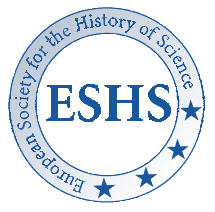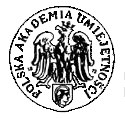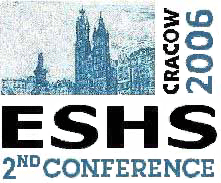Last modification: 25 September 2008
Online Book of Abstracts - A Thematic List:
SESSIONS / SYMPOSIA
Edited by Michal Kokowski
http://www.cyfronet.pl/~n1kokows/home.html
n1kokows@cyf-kr.edu.pl
Symposium R-19.
HOW TO UNDERSTAND AND WRITE THE HISTORY OF SCIENCE?
OR
METHODOLOGY OF THE HISTORY OF SCIENCE
ORGANIZER AND CHAIRMAN OF THE SYMPOSIUM:
Michal KOKOWSKI (Krakow, Poland)
www.cyfronet.pl/~n1kokows/home.html
n1kokows@cyf-kr.edu.pl
The aim of session is:
to focus attention of the historian of science - both the
researcher and the teacher - on a very important but ... neglected subject-matter, that is the methodology of the history of science.
R-19.
The tacit knowledge in the experience of reconstruction of the history of science
Liliya ABRAROVA (Moscow, Russia)
abrarova@zelnet.ru
The history of science consists in search of regularity in development of knowledge in its connection with the history of development of society. We should take into consideration the existence of two-dimensional level of knowledge. Any knowledge assumes subject's self-consciousness but extends further its reflection. Focus of cognitive process is permanently intentional and defined by our substantial need in opening up the world. The main role in acquiring knowledge of the world is played by background of consciousness or, in the terms of Polanyi, by tacit knowledge. The latter, is being transmitted by scientists from generation to generation through the process of training and communication, cannot be verbalized. The process of reflection of scientific knowledge means the reference to implicit knowledge, attempt of its verbalization. The problem of implicit knowledge is not so obvious. Wittgenstein claimed that the limits of our language means the limits of our world. In reconstruction of it should be dissected all the premises of knowledge. But they are much wider as it can be suggested. Being unrecognized, concealed, ostensive, mismatched (with salience varying) knowledge is not able to be verified. The consistency of historical facts is always defined as being subjective. The question is what methodology should we use to make the cumulative knowledge being described in our native language. The more knowledge is tacit, the more plural system of reconstruction of the history of science we receive. Thus there is a pluralist epistemology acknowledging that no single reference system is capable of establishing the single history of science.
R-19.
Writing the history of Catalan molecular biology:
using correspondence, interviews and papers
Xavier CALVÓ-MONREAL (Barcelona, Spain)
arjuna03@terra.es
During the 1960s, the Spanish biochemistry and molecular biology received a decisive impulse for their development. A first generation of biochemists, trained abroad, returned to Spain and sat up their own research groups with the support, mainly from the Spanish Council for Science (CSIC). A new generation, their young graduates, completed their training following the same strategy: postdoctoral stages in research centres in foreign countries.
A particular case, due to their training as chemists, was the group which became to be known as the Catalan structuralist school, led by Jaume Palau and Joan Antoni Subirana. The aim of this communication is to show how it has been possible to reconstruct their early years, using interviews with the main characters, studying their correspondence and analyzing their papers, in the framework of the historiography of biochemistry and molecular biology in Spain and in the international context, stressing the dynamics established between the centre and the periphery, as well.
R-19.
Creating a cross-comparative methodology to study engineering education and profession in Europe today
Anne-Sophie GODFROY-GENIN (Cachan, France)
anne-sophie.genin@ens-cachan.fr
As comparative studies are developing inside Europe, very useful harmonised European statistical data is produced, but a methodology for a more accurate interpretation of the data, combining both qualitative and quantitative approaches, is still under construction. A pluridisciplinary consortium of seven countries tried to develop such a methodology based on empirical experience during the WOMENG research project, funded by the European Union from 2002 to 2005 under the 5th Framework Programme. This project was aimed at understanding when, how and why, women choose or do not choose to study engineering and have careers in engineering in Europe.
Methodology for the WOMENG project had to deal with at least three challenges: first with historically and socially constructed concepts as gender and engineering, second, with large scale cross-national comparison assumed as a research strategy, third with the collection and combination of different sets of data, gathered through different approaches. In addition, the WOMENG project was interdisciplinary and intercultural; this situation implied both translation and methodology issues.
Through research experience, a methodological toolbox emerged from the WOMENG project. Four connected steps have been identified and documented: designing research, doing fieldwork, reporting, analysing and interpreting. This paper will present a detailed description of those steps. Through that common work are emerging similar categories, similar configurations that allow new hypotheses, but don't deny the diversity of each specific setting.
WOMENG results illustrate how an iterative cross-cultural mixed methodology allows fruitful comparisons that go far beyond the usual statistical comparisons. Anyway, further research in methodology for cross-national comparisons remains necessary: If the methodology for research design, fieldwork and reporting may be considered as rather well documented, which ensures comparability and commensurability, the methodology for qualitative comparative analysis needs further research.
R-19.
The image of science:
The unity of philosophy, methodology and the history of science
Natalia KNEKHT (Moscow, Russia)
nata_knecht@mtu-net.ru
The well-known aphorism of Lakatos - "history of science without philosophy of science is blind, and that philosophy of science without history of science is empty" - reflects a modern tendency concerned with revolution in methodology. The controversy between Kuhn and Lakatos was not ended in methodological Feyerabend's anarchism but has pointed a problem. Each methodological concept interprets, estimates and connects historic facts in its own way, creating various "histories of science". Alongside with Lakatos' method of rational reconstruction there are rational reconstruction of inductivism, conventionalism, falsificationism. There is no unanimity in sources of understanding both of essence of science and stages of its evolution. Philosophical, methodological and historical preferences of the very scientist are viewed in the image of science of the new and the newest time. The history of science consists not only of "noble" disciplines have received an exclusive position in the positivistic hierarchy of sciences. By efforts of Foucault the research attention isn't focused on "topmost" disciplines any more but on those areas of knowledge which are less deductive and are likely to be subjected to imagination; raise questions unusual for science allowing to name them marginal; and undermine understanding of science as being histories of "truthful discourses". The understanding of the communicative paradigm as a modern one, the recognition of existence of network interactions of knowledge derivates a new situation of aligning of methodology. Philosophical work consists in co-ordination of methods. The reconstruction of the panorama of the historic scientific researches will not so much raise the qualification of objectivity as result in more exact understanding of borders of method, correct understanding of the thinker and productivity of his methodology, will give vent to new search systems.
R-19.
A meta-history of science and methodology of the history of science urgently needed!
Michal KOKOWSKI (Cracow, Poland)
www.cyfronet.pl/~n1kokows/home.html
n1kokows@cyf-kr.edu.pl
In studying, researching and writing the history of science we are forced to meet many important problems of meta-theoretical and methodological character. However, this subject-mater is, in principle, neglected in literature of the branch. On the contrary, an analogous subject-matter (but not the same!) is discussed by historiography or "the methodology of history", called also often "historical methodology" (but the latter meaning is broader than the former!).
There are many examples that may illustrate an urgent need of discussion on the theme, including the one sketched at the website of Cracow Conference: "How to understand the term historiography?". This term is often restricted only to "the study of the way history has been and is written" or to "the history of historical writing" or to "the study of history seen in the light of ideological and philosophical systems". However, from a methodological point of view, this is a regrettable limitation based finally on an illusion that the historian is able "to research history directly" (by using of the so-called primary sources) as well as "to create purely descriptive re-constructions of history" (by using of only "hard historical facts" or "pure facts", free of any theoretical or philosophical interpretation or generalisation).
Why should knowledge on such illusions be important for historians of science? Because its lack creates great obstacles in research of and teaching on the most subtle and crucial questions, including geneses of scientific discoveries and their receptions.
R-19.
Adjectives, footnotes and captions.
Historiographic biases against preformation in
mid-war accounts of embryology
Clara PINTO-CORREIA (Lisboa, Portugal)
clara@ulusofona.pt
Although impartiality should be their outmost distinction, historians in general are often biased. So are historians of biology in particular. In this case, we chose a simple case study - the doctrine of preformation such as it was presented by seventeenth and eighteenth century microscopists - to shed new light on an old strategy: how an apparently meticulous and respectable scholar can mistake himself for a judge while writing about the past and poison the reader's opinion due to his own aprioristic prejudice. Some authors from the period under scrutiny, such as the distinguished Lamarckist E. S. Russell, wrote in their chapters long and fierce head-on rejections of preformation altogether. However, such rejections seemed to have worked better and sunk deeper when they were subtler. This has been masterly done not by falsifying data or delivering speeches but simply by choosing derogatory adjectives, keeping important information to just about unreadable footnotes and resorting to captions to tell a story different from the text. This trend was quite evident in the large corpus of histories of biology published from the 1930s to the 1950s. For this study we shall focus on the books by the two authors who are, incidentally, considered up to our days the major authorities on histories of embryology, Joseph Needham and Francis Joseph Cole.
R-19.
Technological metaphors and history of science
Jarmo PULKKINEN (Oulu, Finland)
jarmo.pulkkinen@oulu.fi
Nowadays it is widely accepted that metaphors can be employed as "cognitive instruments". In particular, relational metaphors (e.g. "atom is a solar system") can present insight into "how things are". These metaphors point to an analogy between phenomena of two different domains. When we use them as cognitive instruments, we attempt to understand and explain the unknown (target domain) with the known (source domain). Technology is an important source domain of "insightful" metaphors. First, we have a very thorough knowledge of artifacts. As a result, they are very useful in our attempts to explain the unknown with the known. Second, as technology advances, new artifacts are constantly invented. These artifacts can be employed as new insightful metaphors in science. Some types of artifacts have been more important as metaphors than others, i.e. tools, machines and automata.
Study of technological metaphors provides an interesting methodological framework that can be applied in history of science. Level of technological development has influenced the scientific thought of a certain age by imposing external limitations to it. Level of technology has made possible certain artefacts, which, in turn, have created the possibility to employ these artefacts as metaphors. Technology has advanced from simple tools to machines and from machines to automata. In antiquity philosophers and scientists used technological metaphors based on tools and simple machines. In the 17th and 18th century clockwork automaton, e.g. mechanical clock provided a popular metaphor for science. Nowadays, most interesting technological metaphors are based on "feedback automata", e.g. digital computer.
Technological metaphors have also contributed to the substance and structure of scientific theories. First, they introduce terminology where none previously existed. Second, metaphors produce new topics for research, i.e. statements concerning the source domain can be translated into hypotheses concerning the target domain. As a result, metaphor suppresses some details, emphasizes others - in short, organizes our view of target domain.
R-19.
Controversies and concept changes in erythrocyte aging studies: A Look into the dynamics of the research area
Maria STRECHT ALMEIDA (Porto, Portugal)
msalmeid@icbas.up.pt
It is well known that mammalian erythrocytes are peculiar enucleated blood cells specialized for the oxygen transport within the organism. The finding of a definite life span for the circulating human erythrocytes (which in health and under normal condition has duration of approximately 120 days) dates from the first decades of the twentieth century. The accepted understanding of the removal of these cells from the bloodstream as the result of an aging process was not straightforward and the mechanism by which the cell becomes senescent and at the edge of being removed by the macrophages of the reticuloendothelial system is still controversial.
Examples of major discussions mobilizing researchers have been, firstly, the proposal of the selective removal of the oldest circulating erythrocytes versus random destruction, then the identification of different markers of aging as well as the establishment of the mechanisms leading to such entities, or the description of this aging phenomenon as a kind of programmed cell death event in opposition to the idea of accumulation of injuries throughout the life span of these cells.
This paper explores how these controversies and concept changes were embodied in the scientific literature and aims at analyzing their role in knowledge generation and in the dynamics of the research area.




